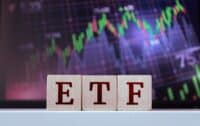Charles I. Plosser, President of the Federal Reserve Bank of Philadelphia, told an audience in Hong Kong that he disagreed with the central bank’s current bond-buying plan. It is another example of the splintering among Fed members as the economy recovers and inflation become a concern. He said:
Of course, before the Fed can begin to implement any sort of exit from the massive volume of accommodation it has put in place, it must stop its attempts to increase accommodation through its ongoing asset purchase program. I was not in favor of the September and December decisions to further grow the balance sheet, as I believed that the costs exceeded the expected benefits. Nevertheless, the Committee chose to establish the current open-ended asset purchase program that would adapt to changing economic conditions, with particular attention to the labor market.
And:
In particular, we should return to an operating framework in which the federal funds rate is our policy instrument, we should shrink the size of our balance sheet to a level consistent with this framework, and we should shorten the duration and return the composition of our portfolio to all Treasuries.
Based on how the members have voted recently, Plosser is not likely to get his way.
Low Expectations for Oil
In its April market report, the International Energy Agency once again lowered its expectation for oil demand this year. In theory, that should keep the price of gasoline down.
The International Energy Agency expects 2013 to be the third consecutive year of weak growth in demand, adding only 795 000 barrels per day (795 kb/d), according to the April Oil Market Report (OMR) published today.
Relatively strong demand growth among non-OECD countries of 1.28 million barrels a day (mb/d) will be tempered by a contraction of 480 kb/d in OECD consumption, particularly in Europe, where it will shrink by 340 kb/d. European demand has not been this weak since 1985.
Mixed Message on Foreclosures
Foreclosures continue to drop throughout the United States, although they are still very high in some of the regions where home prices dropped the most:
RealtyTracy released its U.S. Foreclosure Market Report for March and the first quarter of 2013, which shows foreclosure filings — default notices, scheduled auctions and bank repossessions — were reported on 152,500 U.S. properties in March, a decrease of 1 percent from the previous month and down 23 percent from March 2012.
The decrease in March helped drop first quarter foreclosure numbers to the lowest level since the second quarter of 2007. Foreclosure filings were reported on 442,117 U.S. properties in the first quarter, down 12 percent from the previous quarter and down 23 percent from the first quarter of 2012.
But:
Nevada foreclosure activity increased 13 percent in the first quarter compared to the previous quarter, helping the state post the nation’s second highest foreclosure rate. One in every 115 Nevada housing units had a foreclosure filing during the quarter. First quarter foreclosure activity in Nevada was still down 18 percent from a year ago, but the quarterly increase was driven largely by a recent uptick in foreclosure starts. Nevada foreclosure starts in March increased 88 percent from a year ago to an 18-month high.
It’s Your Money, Your Future—Own It (sponsor)
Retirement can be daunting, but it doesn’t need to be.
Imagine having an expert in your corner to help you with your financial goals. Someone to help you determine if you’re ahead, behind, or right on track. With SmartAsset, that’s not just a dream—it’s reality. This free tool connects you with pre-screened financial advisors who work in your best interests. It’s quick, it’s easy, so take the leap today and start planning smarter!
Don’t waste another minute; get started right here and help your retirement dreams become a retirement reality.
Thank you for reading! Have some feedback for us?
Contact the 24/7 Wall St. editorial team.






